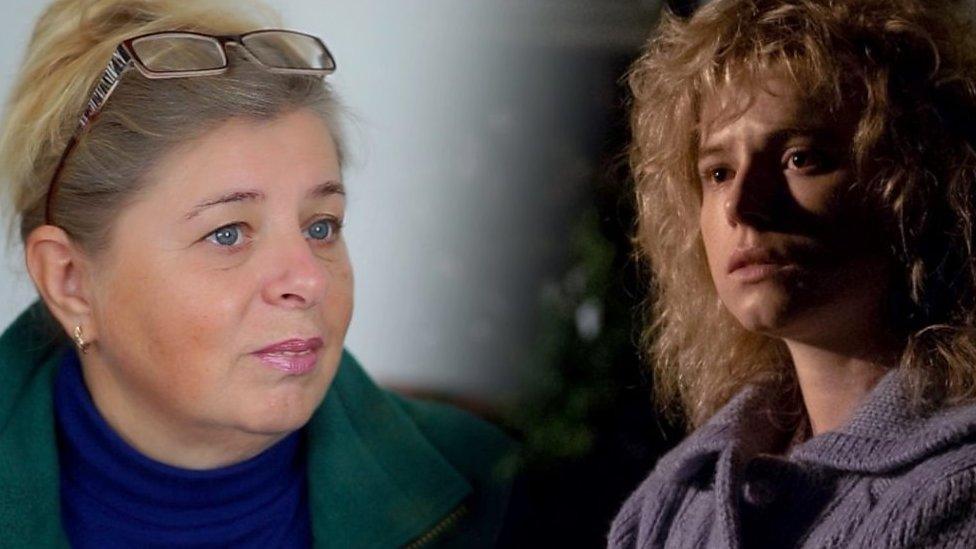Chernobyl fire under control, Ukraine officials say
- Published
Footage shows wildfires near the nuclear disaster site this week
A fire that threatened the abandoned Chernobyl nuclear plant has been contained, Ukrainian authorities said.
Emergency services said on Tuesday there were still some "smouldering" parts of the forest floor, but there was "no open fire" left.
There had been fears the blaze could threaten the site of the 1986 nuclear catastrophe.
Greenpeace Russia said on Monday one blaze was just one kilometre from the plant itself.
Though fires are common in the area, Greenpeace said this was the worst in decades. Police have arrested a 27-year-old man and accused him of starting the blaze.
Ukraine's President Volodymyr Zelensky said he was "carefully monitoring" the situation and praised emergency services for their "courage".
He tweeted that "society needs to know the truth and to be safe".
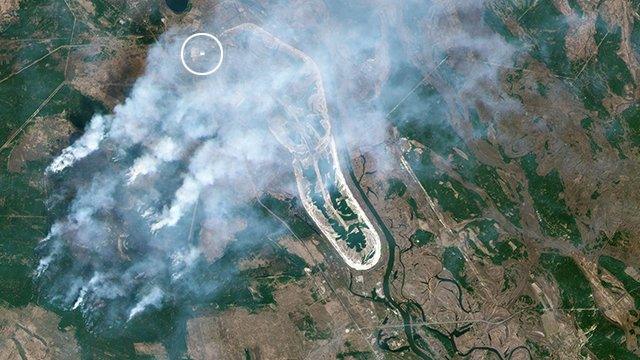
The reactor complex (circled) pictured on 9 April by a satellite operated by the Planet company

By Monday (13 April), the satellite imagery indicated that conditions had improved significantly
In 1986, the former nuclear plant suffered a catastrophic meltdown that spread radioactive fallout across Europe.
Chernobyl and the nearby town of Pripyat have been abandoned ever since, although they have attracted large numbers of tourists in recent years.
What's the situation?
Hundreds of firefighters as well as planes and helicopters were sent to tackle the fire.
On Tuesday, state emergency services announced the blaze had largely been contained.
"There is no open fire," a statement said, adding that there was "a slight smouldering of the forest floor" in separate places.
"We are trying to stop the spread of several hot spots of fire," said Volodymyr Demchuk, a senior official from Ukraine's emergency service.
Aircraft dropped 538 tons of water on the blaze on Monday, the statement said. Background radiation in and around the capital Kyiv "is within normal limits".
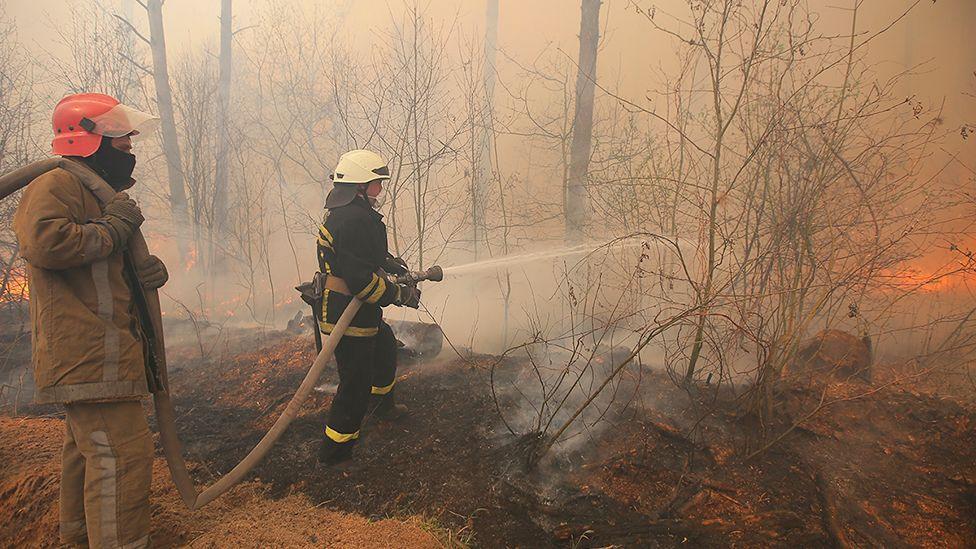
Authorities have been fighting the flames for more than a week
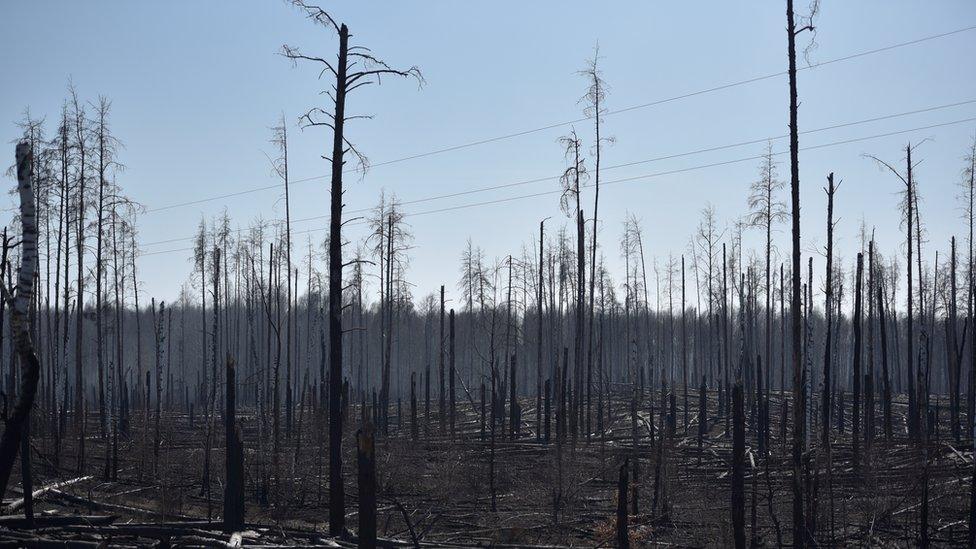
An image from 12 April shows part of the exclusion zone blackened by the flames
Over the past week there have been concerns the fire could threaten the plant and even spread radioactive chemicals.
Sergiy Zibtsev, head of the Regional Eastern European Fire Monitoring Center, told AFP news agency that the fire had become "super-huge" and "unpredictable".
Local tour operator Yaroslav Emelianenko said on Monday that one fire had reached Pripyat and was even just 2km (1.24 miles) from where the most dangerous waste from the plant was stored. "The situation is critical," he wrote on Facebook.
In 2018 more than 70,000 people visited the town. Last year that figure was even higher, after the success of an HBO mini-series about the disaster.


Chernobyl nuclear power station and Pripyat have been abandoned since 1986, when the plant’s No. 4 reactor blew up.
People are forbidden from living within 30km (18 miles) of the power station.
Chernobyl continued to generate power until the plant's last operational reactor was finally closed in 2000. A giant shield built to cover the reactor was installed in November 2016, replacing a decaying sarcophagus built in 1986 to seal in nuclear materials.

The Chernobyl disaster: A timeline
26 April 1986: An explosion occurs in reactor No. 4 after a safety test, blowing off the top and spewing huge amounts of radioactive material into the sky. Graphite fires start in the plant
27 April: Authorities begin evacuating people from the surrounding areas. A huge exclusion zone is eventually set up, where people are barred from living
28 April: The USSR admits an accident has happened at the plant without giving details, saying it is under control. Workers at a Swedish nuclear plant detect radiation which is traced back to the USSR
10 May: The fire in reactor No. 4 finally goes out
14 May : Soviet leader Mikhail Gorbachev talks about the disaster on television. In a memoir 20 years later, Mr Gorbachev suggests the disaster may have been the "real cause" of the collapse of the Soviet Union

Chernobyl's post-human landscape
- Published26 December 2019
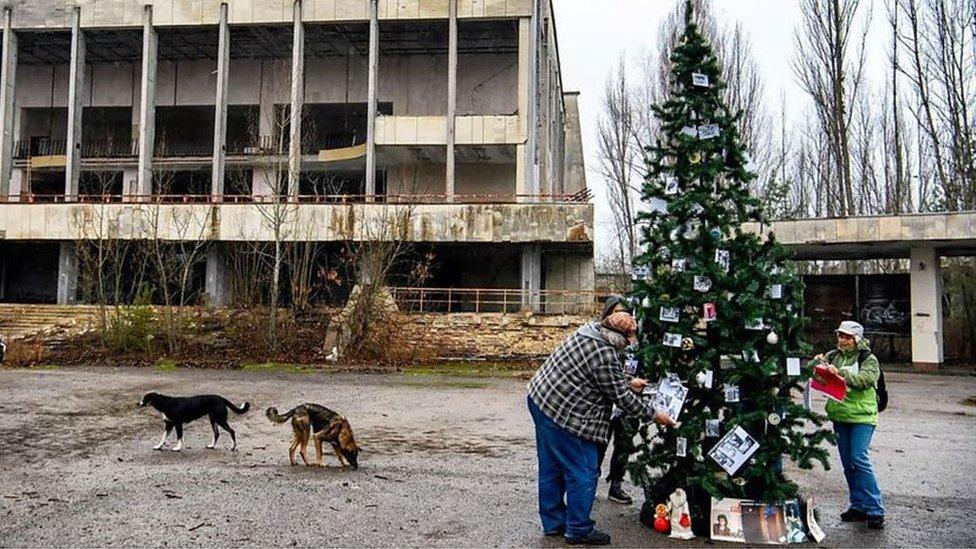
- Published23 December 2019
